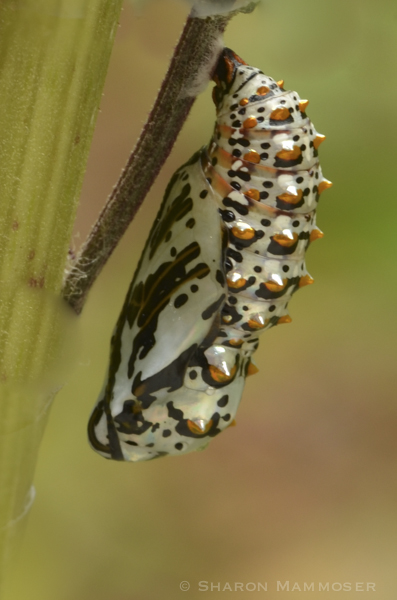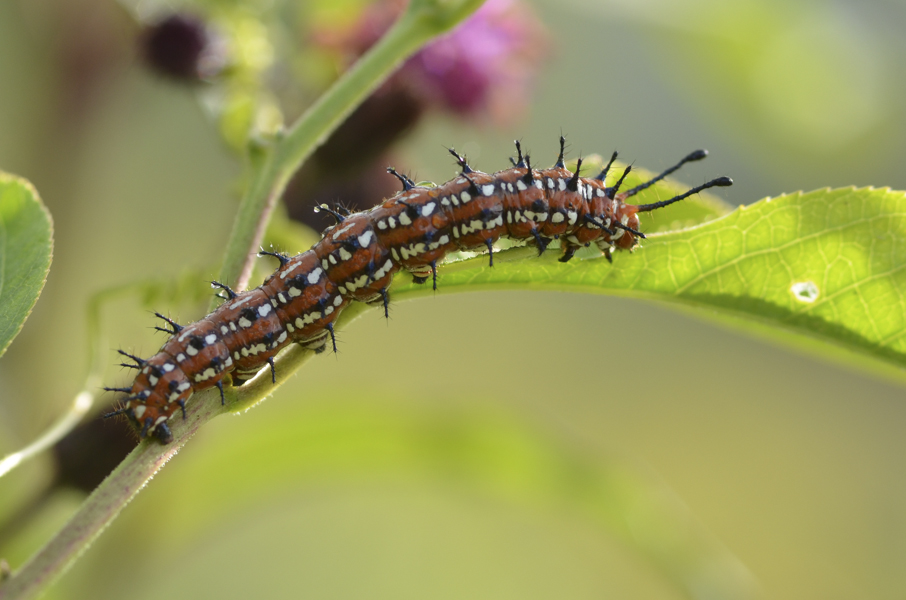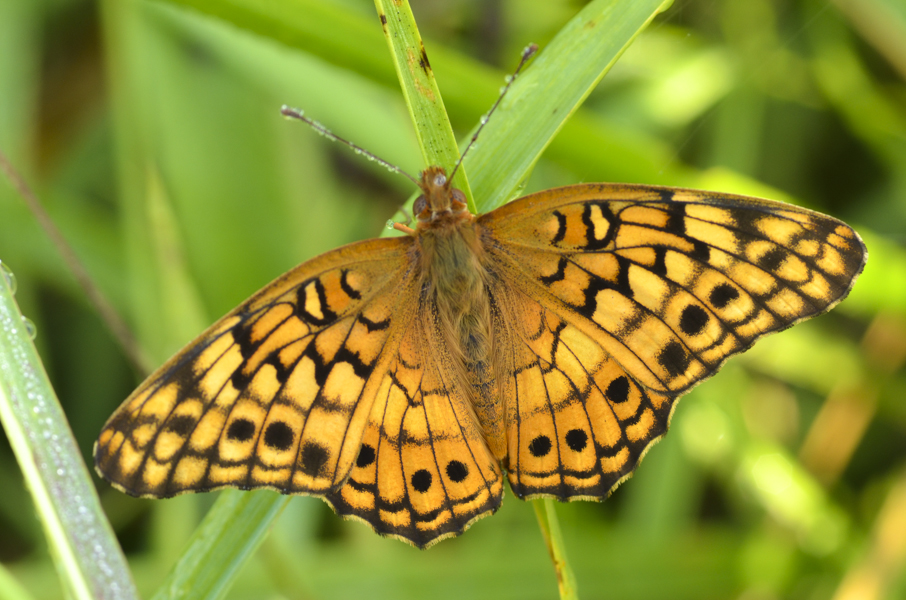Okay, so yes I am guilty of making that last puzzler WAY TOO HARD. I see that now. It was close to impossible! Sorry!
 Perhaps you were able to determine it was a CHRYSALIS, but had no idea from what butterfly. I didn’t know either and had to look it up when I found it. The problem is that I have amazing reference books since this is what I do for a living and many of you might lack these books.
Perhaps you were able to determine it was a CHRYSALIS, but had no idea from what butterfly. I didn’t know either and had to look it up when I found it. The problem is that I have amazing reference books since this is what I do for a living and many of you might lack these books.
Do you know the difference between a chrysalis and a cocoon? Many people use the two terms interchangeably, but this is not correct. The two are very different.
Both butterflies and moths produce silk but they use it differently. One way a butterfly uses its silk is to attach its PUPA to a hard structure. A PUPA is the resting stage of insects, such as butterflies and moths, that undergo complete metamorphosis. (The other kind of metamorphosis is gradual or incomplete. In this kind there are 3 stages rather than 4: egg, nymph/larva,adult.Bugs and beetles are two insects that go through incomplete metamorphosis)
A CHRYSALIS is strictly used for a BUTTERFLY pupa.
A chrysalis is the hard skin of a butterfly’s body beneath its last molting and it can be many different colors, textures,shapes and sizes. If you want, you can watch a chrysalis being made here–this is AMAZING!
A COCOON on the other hand is a silken case that a moth caterpillar (or other insect) spins around it (for protection) before it enters the pupal stage.
So the chrysalis from last week’s puzzler? Well to be honest, I am not 100% certain! At first I was sure it was from a butterfly called a Baltimore Checkerspot but in all my time outside, and especially lately in the same field everyday, I have never seen this butterfly. What I have seen are lots of Variegated Fritillaries, including their

caterpillars–which are just as beautiful as the butterfly and chrysalis. These chrysalises are very similar, both surely at the top of the list of most beautiful chrysalises of all butterflies. So having seen so many Variegated Fritillaries in the field, I am pretty sure that’s what it is.
I brought this metallic chrysalis home and am keeping an eye on it, hoping I will notice some change and then get to witness its emergence. That would be AMAZING!! However, not knowing when it was made puts me at a disadvantage. Most butterflies stay in their chrysalis 10-14 days. So of course this one could be right at the beginning of that, in the middle, or nearing the end. I can only look at it regularly and try to be home often to check on it.

If I witness its emergence, you can be sure I will share my photos with you! Cross your fingers for me! Last year I watched some other butterflies emerging from their chrysalises–You can check them out too– a red-spotted purple butterfly emerging from its chrysalis or a monarch emerging from its lovely green chrysalis. If you’ve never gotten to see this–it’s worth a look, as it’s a real miracle of nature…absolutely amazing!
Did you know that all the pictures featured in my blog posts are taken by ME? I spend a great deal of time out in the field and forest and other wild places photographing all kinds of plants and animals so I can share it with you here on my blog or elsewhere in programs that I teach. ( I am teaching a class about bats in November if you are interested!)
Want to check out the next puzzler? It’s about a red-crested bird. I guarantee it is easier than this last one! Don’t forget to add your guess in the comment box below for your chance to be qualified in the next drawing. It only takes a minute!
Have a great weekend! See you again soon!

